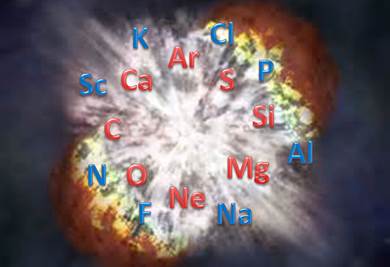The first stars in the Universe formed about 400 million years after the Big Bang. Inside of these stellar furnaces, nuclear processes fused the hydrogen and helium made by the primordial nucleosynthesis into heavier elements. Each of these stars left ashes with a unique abundance pattern signature after their death. It is vital to our understanding of the properties of the first stars and the formation of the first galaxies to verify the predicted composition of stellar ashes by comparing to observational data. Hence proper modeling of the stars and their nuclear reactions is required. One reaction having a potentially large influence on key properties of the abundance pattern is the fusion of two 12C nuclei into 23Mg and one neutron. The measurement of stellar reaction rates in the laboratory is difficult because the processes typically have very low probabilities making a successful reaction quite rare. Recently, an international nuclear astrophysical team led by Dr. Xiaodong Tang (IMP, CAS) and Dr. Bucher (LLNL,US) has successfully measured this carbon fusion reaction at stellar energies for the first time using a laboratory accelerator. With this new measurement, they have significantly improved the precision of this rate inside stars. Their new result is crucial to the identification of the signature of the Universe’s elusive first generation of stars and their supernovae. This work was jointly supported by funding agencies such as National Science Foundation (US), Chinese Academy of Sciences, National Natural Science Foundation of China. Other institutions involved in the research include the University of Notre Dame (US), Lawrence Livermore National Laboratory (US), Monash University (Australia), Shanghai Jiao-Tong University (China), University of Minnesota (US), China Institute of Atomic Energy, Konkoly Observatory (Hungary), University of Basel (Switzerland) and University of California, Santa Cruz (US). This work was published in Physical Review Letter (Phys. Rev. Lett. 114, 251102 (2015)). The article can be linked as follows: http://journals.aps.org/prl/abstract/10.1103/PhysRevLett.114.251102 
First stars after their death left ashes with a unique abundance pattern signature which is vital to our understanding of the properties of the first stars and the formation of the first galaxies to verify the predicted composition of stellar ashes by comparing to observational data.(Image above is composed by IMP based on a picture from NASA) |

